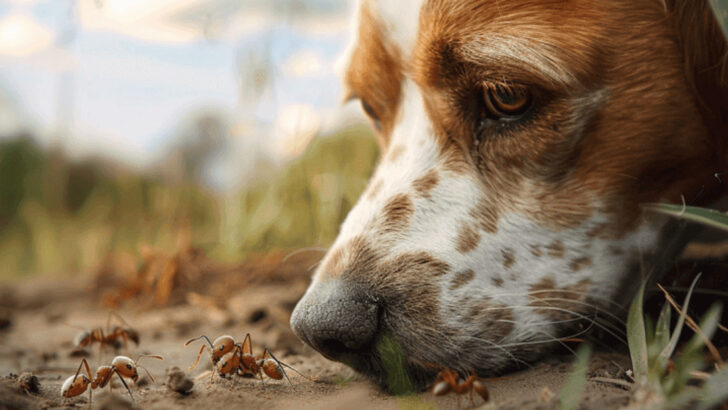One bite could ruin your dog’s whole summer. While you’re tossing tennis balls and soaking up the sun, something smaller—and far nastier—could be lurking in the grass. From bloodsucking parasites to sting-happy insects, summer is peak season for the bugs that love to feast on your furry best friend. Some of them carry serious threats. We’re talking infections, allergic reactions, even life-threatening diseases. And most pet owners don’t realize the danger until it’s too late. But don’t panic—we’re not here to scare you into bubble-wrapping your pup. We’ve got smart, vet-approved ways to fight back. Here’s how to spot the worst offenders… and what actually works to keep your dog safe, happy, and bite-free all season long.
Mosquitoes

Mosquitoes, notorious for their itchy bites, are more than just a summer nuisance. They carry deadly heartworm larvae that can infect dogs. Imagine your dog enjoying a sunny day, unaware of these tiny predators. Heartworm disease can be fatal if not treated promptly. Preventive measures are crucial. Use veterinarian-recommended mosquito repellents and ensure your dog is on a heartworm preventative year-round. Regular check-ups can catch infections early. Create an environment less inviting to mosquitoes by eliminating standing water where they breed. With awareness and precautions, your pet can frolic safely in mosquito-prone areas.
Fleas

Fleas are tiny but mighty invaders. They cause irritation, allergic reactions, and can lead to anemia in severe cases. Picture a playful pup scratching incessantly, unable to find relief. Fleas multiply quickly, making early intervention essential. Use vet-approved topical or oral flea treatments to protect your dog. Regular grooming helps spot infestations early, while vacuuming carpets and washing bedding reduces flea eggs in the home. Remember, fleas can also transmit tapeworms, adding another layer of concern. By maintaining cleanliness and using effective treatments, you can keep these pests at bay.
Ticks
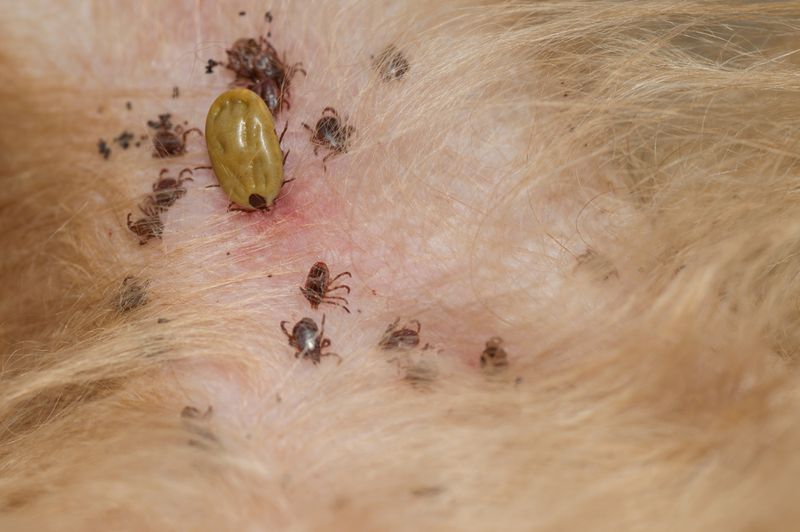
Ticks are stealthy parasites that latch onto dogs, feeding on their blood and potentially transmitting diseases like Lyme disease. Envision a curious dog exploring the woods, with ticks lying in wait. These arachnids can be difficult to spot due to their small size. Invest in tick preventatives and perform daily tick checks, especially after walks in tall grass or wooded areas. Remove ticks promptly with tweezers, ensuring no parts are left behind. Creating a tick-safe zone in your yard by keeping grass short can also reduce encounters. Vigilance is key to managing tick threats.
Bees and Wasps

While bees and wasps play vital ecological roles, they pose a sting risk to curious dogs. Picture a dog frolicking in a flower garden, intrigued by buzzing insects. Stings can cause swelling, allergic reactions, or even anaphylaxis in susceptible dogs. Keep an eye on pets around flowers and garbage bins where these insects gather. If stung, remove the stinger and apply a cold compress. For severe reactions, seek veterinary care immediately. Training your dog to ignore insects can also prevent incidents. By staying alert, you can enjoy outdoor adventures with fewer worries.
Ants

Ants might seem harmless, but certain species can cause painful bites or stings. Visualize a dog sniffing curiously at an anthill. Fire ants, in particular, inject venom that can cause severe reactions. Keep pets away from known ant areas and consider ant-proofing your yard. If your dog is bitten, wash the area with soap and water, applying a cold compress to ease discomfort. Ant baits and traps can help control populations, but ensure they are pet-safe. With awareness and prevention, your dog can explore the backyard without falling victim to these tiny aggressors.
Spider Bites
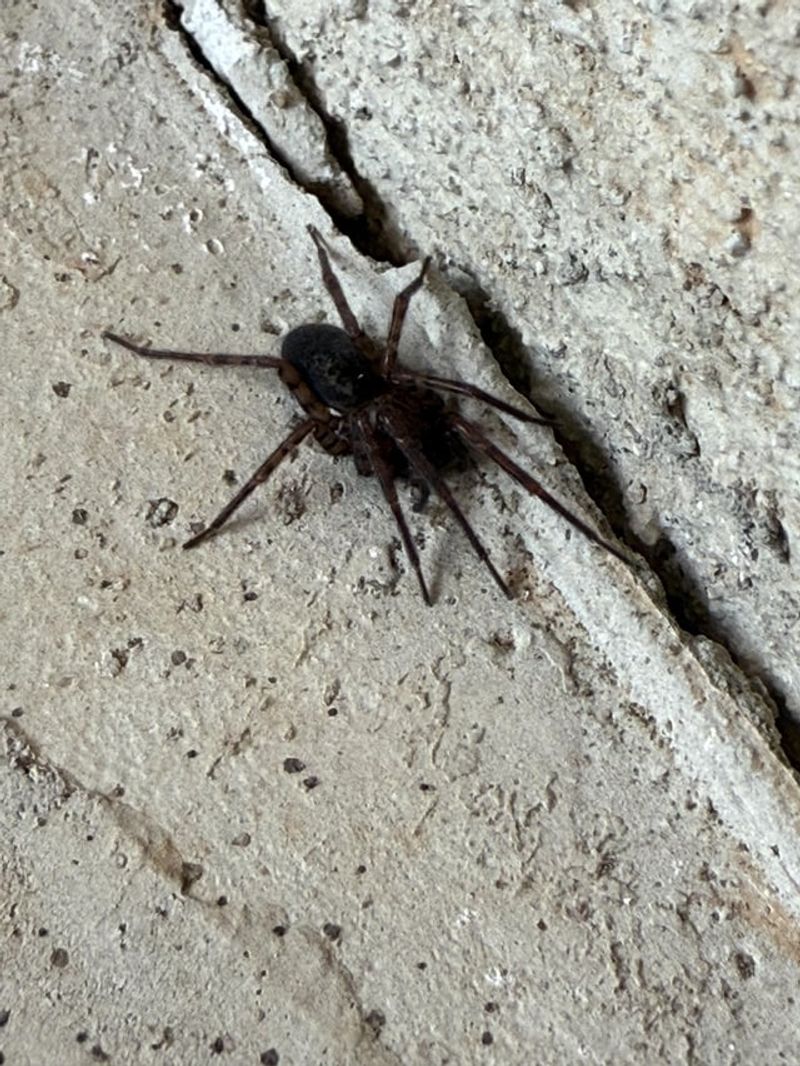
Spiders often lurk in hidden corners, and while most are harmless, some can pose risks. Imagine a curious dog nosing around, unknowingly disturbing a spider. Bites from spiders like the black widow or brown recluse can cause significant health issues. Keep an eye on symptoms such as pain, swelling, or lethargy after encounters. Seek veterinary care if you suspect a venomous bite. Regularly vacuum and dust to minimize spider habitats in your home. By maintaining a clean environment and staying vigilant, you can reduce the risk of spider bites to your pet.
Flies

Flies, though not usually dangerous, can cause significant discomfort. Consider a leisurely day at the park interrupted by swarms of flies bothering your dog. Besides irritation, flies can lead to conditions like fly strike, where they lay eggs on a dog’s skin, leading to painful sores. Maintain cleanliness to deter flies, and use dog-safe fly repellents when outdoors. Regularly clean your dog’s ears and face to prevent fly attraction. With a proactive approach, you can ensure your dog enjoys outdoor activities without the nuisance of pesky flies.
Vet-Approved Bug Repellents
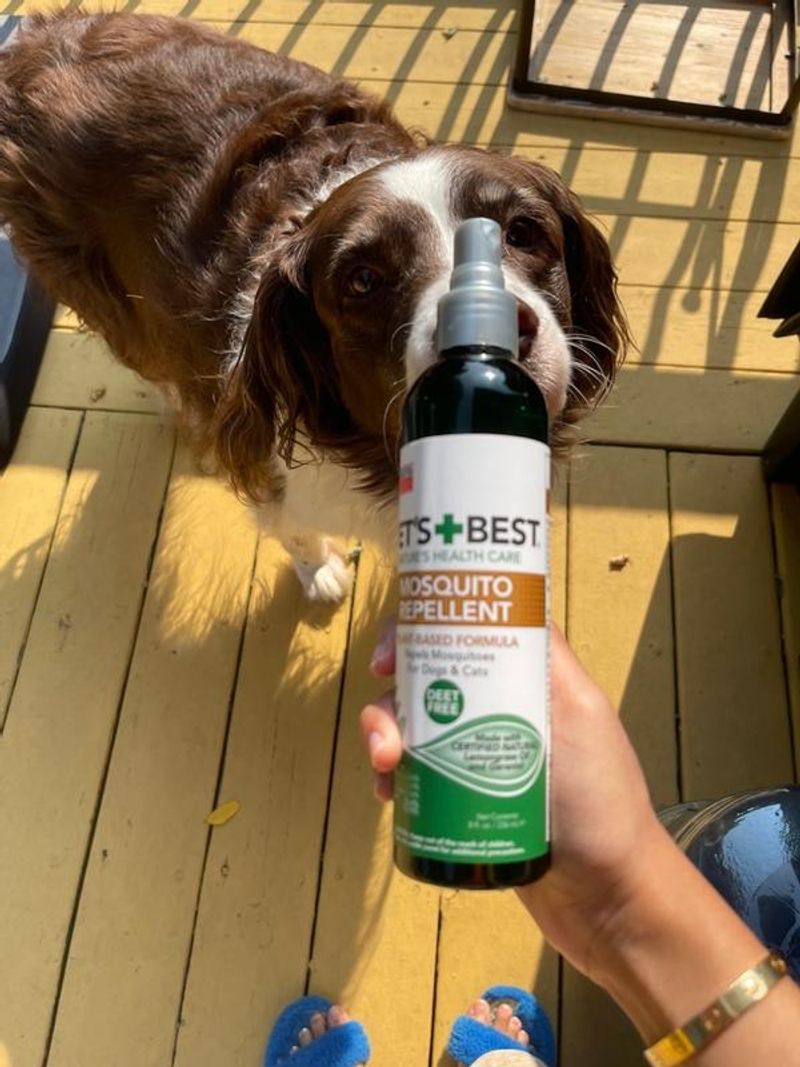
Protecting your dog from summer bugs starts with the right products. Imagine a vet discussing options with a concerned pet owner. Vet-approved bug repellents offer a safe barrier against pests. Choose natural repellents with ingredients like citronella or lavender, known for their efficacy. For more persistent pests, chemical repellents may be necessary, but always consult your vet to ensure they’re safe for your specific pet. Regular application, especially before outdoor activities, enhances protection. By choosing the right products, you can enjoy a bug-free summer with your furry friend.
Regular Grooming

Regular grooming is a frontline defense against bugs. Picture a dog enjoying a pampering session, shedding loose fur and checking for pests. Grooming helps detect early signs of infestations, such as fleas or ticks, and keeps the coat healthy. Use a fine-tooth comb to check for bugs, especially after outdoor adventures. Choose grooming products wisely to avoid skin irritation. Professional grooming services can be invaluable for thorough care. By maintaining a regular grooming routine, you can enhance your dog’s comfort and health while minimizing bug-related issues.
Secure Outdoor Spaces

Creating a safe outdoor environment involves more than just aesthetics. Envision a pristine garden designed with your dog’s safety in mind. Secure fencing keeps out wildlife that could carry bugs. Regularly inspect and repair any breaches. Remove debris and standing water to deter mosquitoes and other pests. Plant pest-repelling herbs like mint or rosemary to naturally protect your garden. Encourage your dog to play in designated areas, reducing exposure to potential bug habitats. By investing in a secure outdoor space, you provide a haven for your dog to enjoy summer safely.
Regular Vet Check-ups

Routine vet visits are essential for peace of mind. Picture a vet explaining the risks of summer bugs to a dedicated pet owner. These check-ups help monitor your dog’s health and catch any issues early, such as heartworm or Lyme disease. Discuss preventative measures and ensure vaccinations are up-to-date. Vets can provide tailored advice based on your dog’s lifestyle and environment. Additionally, they can recommend effective treatments for existing bug issues. By maintaining regular vet visits, you stay informed and prepared to tackle summer’s bug challenges confidently.
Maintain Clean Living Spaces

A clean home is a bug-free home. Envision a spotless living room where a dog lounges happily, free from pests. Regular cleaning reduces the risk of infestations and keeps your pet comfortable. Vacuum frequently, especially in areas your dog frequents. Wash bedding often and use pet-safe cleaners to maintain hygiene. Address any pest issues promptly with professional help if needed. By cultivating clean living spaces, you create a healthy environment for your dog to thrive, reducing the stress and discomfort associated with bugs.
Effective Pest Control Solutions
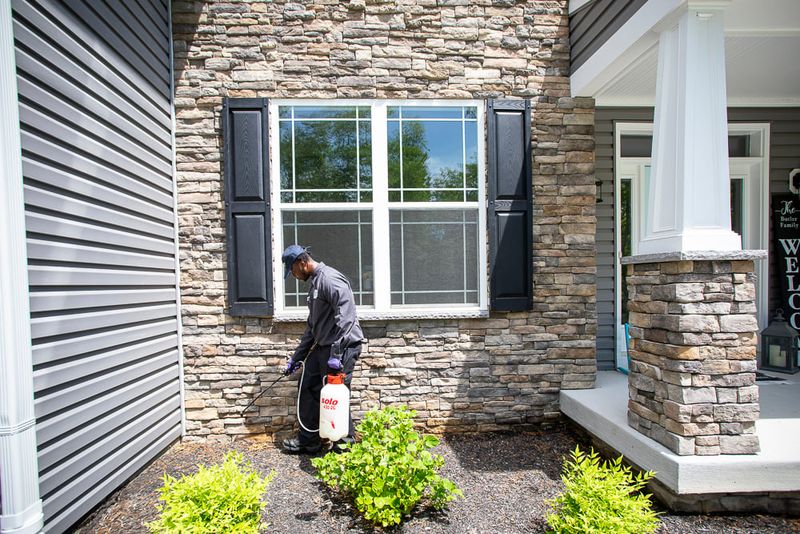
Sometimes, professional intervention is necessary to keep bugs at bay. Imagine a pest control expert using pet-friendly methods to secure a home. Choose services that prioritize your pet’s safety, avoiding harsh chemicals. Discuss options with professionals to tailor solutions to your specific needs. Regular treatments can prevent infestations before they become problematic. Complement professional services with DIY measures like sealing entry points and using natural repellents. Together, these strategies ensure a comprehensive approach to pest management, keeping your home safe for your dog throughout the summer.
Educate Family Members

Education is a powerful tool in maintaining pet safety. Picture a family gathered, watching a vet’s video on summer bug threats. Sharing knowledge about potential hazards ensures everyone is vigilant. Teach children about the importance of avoiding bug-prone areas and supervising pets. Discuss safe practices, like not leaving doors open unknowingly. Encourage open communication about any concerns or sightings of bugs. By fostering a culture of awareness, you empower your family to contribute to your dog’s safety, making summer a joyous and safe season for all.
Kissing Bugs: The Silent Threat

Kissing bugs, often associated with Chagas disease, are more than a minor nuisance. Found in warmer climates, these pests can transmit Trypanosoma cruzi, a parasite potentially lethal to dogs. These insects are primarily active at dusk, making them a hidden danger during evening walks.
Unlike more famous bugs, kissing bugs often go unnoticed until it’s too late. Their bites may cause swelling or allergic reactions in dogs.
To combat this, ensure your pet’s bedding is clean and regularly inspect for signs of these bugs. A simple evening check can save a lot of heartache.

